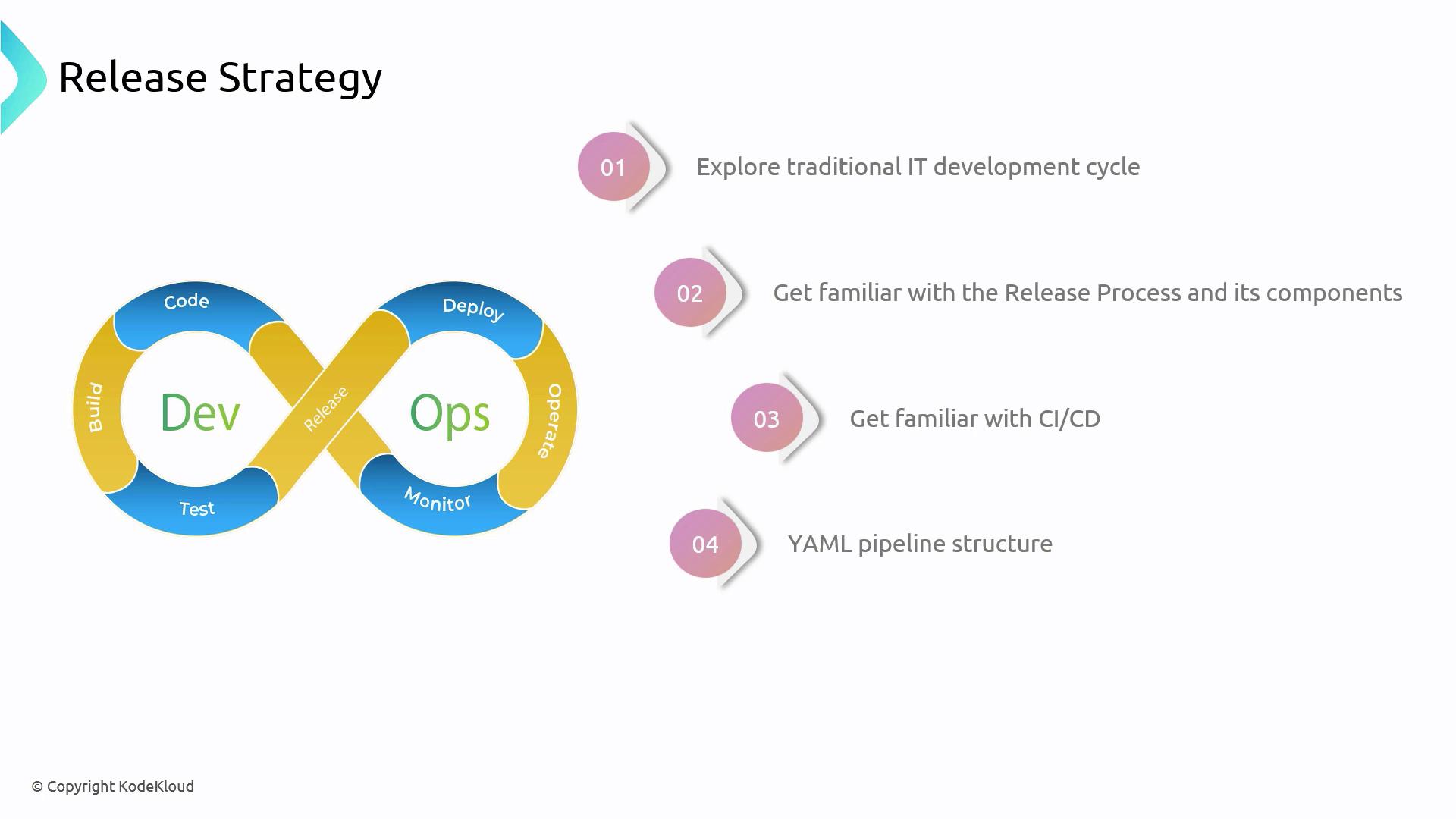AZ-400: Designing and Implementing Microsoft DevOps Solutions
Implementing an Orchestration Automation Solution
Introduction Implementing an Orchestration Automation Solution
In this lesson, you’ll learn how to build a robust orchestration automation solution using Azure DevOps. We’ll walk through the standard IT development lifecycle, define a release strategy, and explore how the DevOps CI/CD methodology shapes your approach to release management. By the end, you’ll have a solid foundation in YAML pipeline structure and release gates.
Note
This guide assumes basic familiarity with Git, Azure DevOps, and CI/CD concepts. If you’re new to any of these, refer to the Azure DevOps documentation for a quick primer.
What You’ll Cover
| Section | Description |
|---|---|
| 1. IT Development Lifecycle & Release Strategy | Examine standard stages and formulate an effective release plan. |
| 2. Key Components of the Release Process | Break down phases, jobs, and dependencies. |
| 3. DevOps CI/CD Methodology | Understand CI/CD fundamentals and its impact on releases. |
| 4. YAML Pipeline Structure Essentials | Explore YAML syntax, stages, jobs, and steps. |
| 5. Designing the Release Process | Organize stages, manage dependencies, and set conditions. |
| 6. Azure Pipelines Best Practices | Optimize performance, security, and maintainability. |
| 7. Release Gates Explained | Learn what gates are and why they’re critical. |
| 8. Implementing Release Gates (YAML Example) | Hands-on sample in Azure YAML pipelines. |
| 9. Release Process Best Practices | Tips for reliability, repeatability, and scalability. |

Let’s dive in!
Links and References
- Azure DevOps Documentation
- YAML Pipeline Schema Reference
- Continuous Integration vs. Continuous Delivery
Watch Video
Watch video content